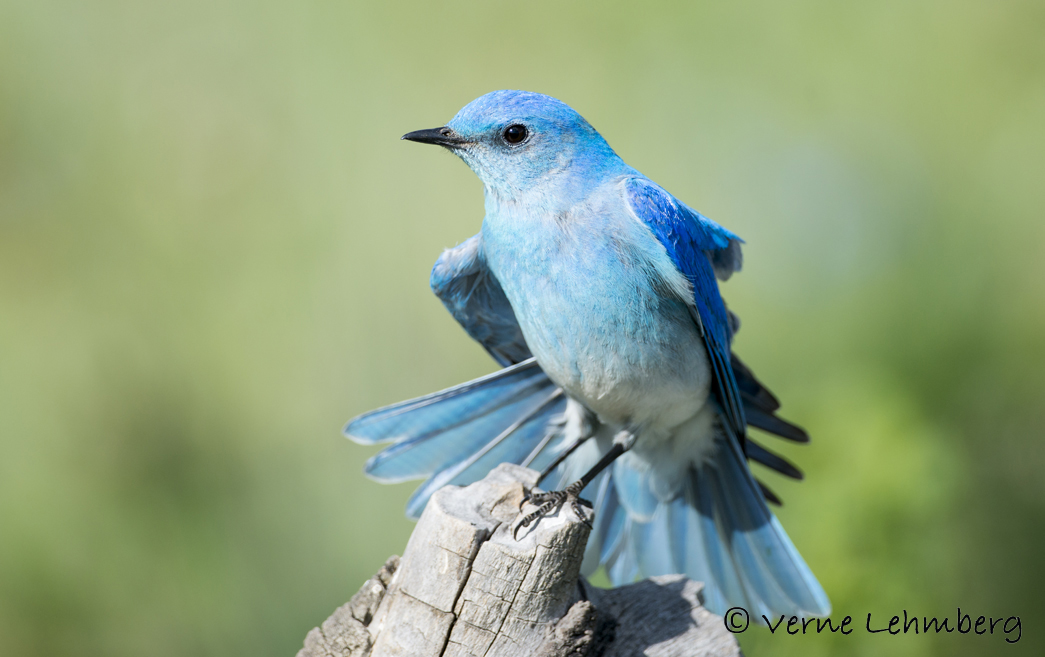
Because many Yellowstone visitors are busy looking for bears, wolves and geysers they often don’t pay much attention to some of the smaller species, especially birds. But I can’t help it. I have been a bird watcher for over 40 years and I can’t stop looking, even for the little guys. Bird identification is often a process of elimination. Is it in a tree? Not likely to be a duck, except wood ducks. Does it spend a lot of time on the ground? Then it is probably not a woodpecker.

The dark-eyed junco is one of the more common birds in Yellowstone. It is related to sparrows and like sparrows spends a lot of time near the ground eating seeds and insects. This is a bird we see at our feeders in Texas in the winter and in Yellowstone in the summer. It is best recognized by its sparrow size, pink bill, and white edged tail.
I digress here, but have you ever thought about what birds eat? There are thousands of bird species so there is lots of variation but one thing you rarely see them eat is leaves. (With the exceptions of Canada geese, Hoatzins, and some ducks.) Most birds don’t eat tree leaves, grass leaves, or any other kind of leaf. If you think about it that makes sense. Grass doesn’t contain a lot of nutrients and takes a long time to digest. Birds can’t afford to eat grass. They would have to carry around too much of it while it digests and that is not conducive to flying. Think about a cow with wings and you might see why it doesn’t work.

White-breasted nuthatches are not uncommon in Yellowstone but they can be difficult to see. They spend much of their time foraging for insects on tree trunks and limbs. If you see a grayish small bird working its way down a tree trunk it is probably a nuthatch. They nest in tree holes many times at eye level, but their nests can be difficult to find.

Mountain bluebirds are fairly easy to find in Yellowstone. They migrate through Yellowstone in large numbers in the spring but some stay to nest. They nest in tree holes with both parents bringing insects to the babies. While they are foraging they can be seen sitting on a tree limb or the top of a bush. When they spot an insect they fly out to catch it, often returning to the same perch.
Up until this year you could always find them nesting in a post that was part of a sign on the south side of the road at Roosevelt. For some reason the Park Service replaced that post, along with the post on the west side of the road going out into the Lamar Valley at the same intersection. That one could always be counted on to have a nest of Northern flickers, but no more.

OK I know this last one isn’t a bird, but I kind of liked it so I threw it in. It is a bee at a thistle. If you look closely you can see a wad of pollen on her leg.






My favorite memory of Deby is seeing her on the beach with her dog, both standing still (except for her camera working overtime), completely surrounded by shorebirds feeding in the wet sand. Her dog did not chase the birds and the birds were ignoring both of them. It was magical.
I love your bird photos!
Love the birds of YSNP. We had a western tanager give us two opportunities for photos at the osprey nest which we hear has now fallen in the Lamar canyon in late June. We never got a really good pic of a mountain bluebird but will try again next year. Thanks for the great stories.
Susan you might notice I haven’t posted a photo of a western tanager. I have a few photos of them but none that are any good. Some birds hold still for you and some don’t. Deby got a fabulous photo of a western tanager. Maybe she will post it for us?
I love your bird photos, Judy. My husband and I are bird watchers, too. We have feeders set up outside our den windows and have fun trying to identify any newcomers. We’ve had two kinds of woodpeckers bring their young ones to our suet feeders this year. They’re such fun to watch.
Well I have to say I’m jealous Kitty. If I put up suet feeders at home the opossums and raccoons get it. I would love to see my woodpeckers bring in their babies.
Great pics and information. You gave me some simple ways to help in IDing birds – which is not my favorite thing to do. I kind of like that last one too! At least it flies.
Deby I’ve taken an ornithology class where I learned a lot but then I took a non-credit bird ID course at a museum. That is where I learned to bird watch. All you really need is a bird book and a pair of binoculars, or a long lens and the desire to learn. Yellowstone is a good place to start because there aren’t a huge number of choices. In Spring on the Texas it is possible to see 25 species of warblers in one day. You can only find 3 or 4 in Yellowstone.
Thanks for the bird pictures. I also bird and enjoyed watching the birds of YNP. Discovered that getting good pictures isn’t an easy thing to do! Congrats on your pics.